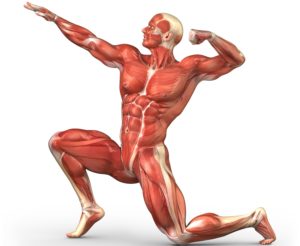Decreased muscle mass is a common concern for many adults, especially as they age. This condition, medically known as muscle atrophy or sarcopenia when age-related, can have significant impacts on overall health and quality of life. Understanding the causes, effects, and potential solutions for muscle loss is crucial for maintaining strength and independence as we grow older.
Table of Contents
Key Takeaways
- Decreased muscle mass, also known as muscle atrophy, is a common issue affecting many adults as they age
- Sarcopenia is the medical term for age-related muscle loss
- Inactivity, poor nutrition, and certain medical conditions can contribute to muscle loss
- Regular resistance training and adequate protein intake are crucial for maintaining muscle mass
- Hormone optimization therapy may help combat muscle loss in some individuals
- Early intervention and lifestyle changes can slow or reverse muscle loss in many cases
Understanding Muscle Mass and Its Importance

Muscle mass refers to the amount of skeletal muscle in your body. These muscles are responsible for movement, posture, and strength. As we age, it’s natural to experience some degree of muscle loss. However, excessive or rapid muscle loss can lead to various health issues and decreased functionality.
The Role of Muscles in Overall Health
Muscles play a vital role in our body beyond just allowing us to move. They contribute to:
- Metabolism: Muscle tissue burns more calories at rest than fat tissue, helping maintain a healthy weight.
- Blood sugar control: Muscles use glucose for energy, helping regulate blood sugar levels.
- Bone health: Strong muscles help maintain bone density and reduce the risk of osteoporosis.
- Balance and coordination: Adequate muscle mass helps prevent falls and injuries.
The Natural Progression of Muscle Mass
Throughout our lives, muscle mass naturally fluctuates. In our youth and early adulthood, we typically build muscle mass. However, starting around age 30, most people begin to lose muscle mass at a rate of about 3-5% per decade. This process accelerates after age 60, leading to more noticeable changes in strength and appearance.
Common Causes of Decreased Muscle Mass

Several factors can contribute to muscle loss beyond the natural aging process. Understanding these causes can help identify potential areas for intervention and prevention.
Inactivity and Sedentary Lifestyle
One of the primary causes of muscle loss is a lack of physical activity. When muscles aren’t used regularly, they begin to atrophy. This is particularly common in people with desk jobs or those who lead sedentary lifestyles.
Poor Nutrition
Inadequate protein intake is a significant contributor to muscle loss. Protein is essential for muscle maintenance and growth. Without sufficient protein in the diet, the body may break down muscle tissue for energy.
Medical Conditions
Certain medical conditions can lead to muscle loss, including:
- Chronic diseases like cancer, HIV/AIDS, and COPD
- Neurological disorders such as multiple sclerosis and ALS
- Endocrine disorders like diabetes and thyroid problems
Hormonal Changes
Hormones play a crucial role in muscle maintenance. As we age, hormonal changes can contribute to muscle loss. Decreased levels of testosterone, growth hormone, and estrogen can all impact muscle mass.
Signs and Symptoms of Decreased Muscle Mass

Recognizing the signs of muscle loss early can help in addressing the issue before it becomes severe. Common symptoms include:
Visible Changes in Body Composition
One of the most noticeable signs of muscle loss is a change in body shape. You may notice less definition in your arms, legs, or torso. Clothes may fit differently, particularly around areas like the shoulders or thighs.
Decreased Strength and Endurance
As muscle mass decreases, you may find it harder to perform everyday tasks like carrying groceries or climbing stairs. Once easy activities may now leave you feeling tired or weak.
Increased Risk of Falls and Injuries
Reduced muscle mass can affect balance and coordination, leading to a higher risk of falls. This is particularly concerning for older adults, as falls can lead to serious injuries and complications.
Slower Recovery from Physical Activity
With less muscle mass, your body may take longer to recover from physical exertion. You might experience more soreness or fatigue after exercise or daily activities.
The Impact of Decreased Muscle Mass on Health
Muscle loss can have far-reaching effects on overall health and well-being. Understanding these impacts can motivate individuals to take action to maintain their muscle mass.
Metabolic Effects
Decreased muscle mass can slow down metabolism, making it easier to gain weight and harder to lose it. This can increase the risk of obesity and related health issues.
Increased Risk of Chronic Diseases
Lower muscle mass is associated with a higher risk of developing chronic diseases such as type 2 diabetes, cardiovascular disease, and certain cancers.
Reduced Quality of Life
As muscle loss progresses, it can significantly impact daily life. Simple tasks may become challenging, leading to decreased independence and potential social isolation.
Bone Health Concerns
Muscles and bones work together to maintain strength and stability. As muscle mass decreases, it can lead to reduced bone density, increasing the risk of osteoporosis and fractures.
Strategies to Combat Muscle Loss
While some muscle loss is inevitable with age, there are several strategies that can help slow or even reverse this process.
Resistance Training
Regular strength training is one of the most effective ways to maintain and build muscle mass. This can include weightlifting, bodyweight exercises, or resistance band workouts.
Proper Nutrition
A diet rich in protein is crucial for muscle maintenance. Aim for about 1.2 to 2.0 grams of protein per kilogram of body weight daily, spread throughout the day.
Staying Active
Incorporating regular physical activity into your daily routine can help maintain muscle mass. This doesn’t have to be intense exercise – even activities like gardening or brisk walking can help.
Hormone Optimization
For some individuals, hormone optimization therapy may be beneficial. This should be discussed with a healthcare provider to determine if it’s appropriate and safe.
The Role of Hormone Optimization in Muscle Maintenance
Hormone optimization therapy, particularly for testosterone and growth hormone, has shown promise in helping maintain muscle mass in some individuals.
Testosterone and Muscle Mass
Testosterone plays a crucial role in muscle protein synthesis. As testosterone levels naturally decline with age, some men may benefit from testosterone replacement therapy to help maintain muscle mass.
Growth Hormone and Muscle Preservation
Growth hormone also plays a role in muscle maintenance. While growth hormone therapy is not typically recommended solely for muscle preservation, it may be beneficial for individuals with diagnosed growth hormone deficiency.
Considerations for Hormone Therapy
It’s important to note that hormone therapy is not suitable for everyone and carries potential risks. Any decision to pursue hormone optimization should be made in consultation with a qualified healthcare provider.
Lifestyle Changes to Support Muscle Health
In addition to exercise and nutrition, several lifestyle factors can impact muscle health.
Quality Sleep
Adequate sleep is crucial for muscle recovery and growth. Aim for 7-9 hours of quality sleep each night.
Stress Management
Chronic stress can contribute to muscle loss through hormonal changes. Incorporating stress-reduction techniques like meditation or yoga can be beneficial.
Limiting Alcohol and Tobacco Use
Both alcohol and tobacco can negatively impact muscle health. Limiting or avoiding these substances can support overall muscle maintenance.
When to Seek Professional Help
While some muscle loss is normal with aging, significant or rapid muscle loss should be evaluated by a healthcare professional. Seek medical advice if you notice:
- Sudden or unexplained muscle loss
- Muscle loss accompanied by other symptoms like fatigue or weight loss
- Difficulty performing daily tasks due to weakness
- Frequent falls or loss of balance
Conclusion
Decreased muscle mass is a common concern, particularly as we age. However, it’s not an inevitable part of aging that we must accept. Through a combination of regular exercise, proper nutrition, and lifestyle changes, it’s possible to maintain and even build muscle mass well into our later years. For some individuals, hormone optimization therapy may provide additional support in maintaining muscle health. By taking proactive steps to preserve muscle mass, we can maintain our strength, independence, and overall health as we age.
| Age Group | Average Annual Muscle Loss |
|---|---|
| 30-40 | 0.5-1% |
| 40-50 | 1-2% |
| 50-60 | 1.5-2.5% |
| 60+ | 2-3% |
| Protein Source | Grams of Protein per 100g |
|---|---|
| Chicken Breast | 31g |
| Greek Yogurt | 10g |
| Lentils | 9g |
| Eggs | 13g |
| Salmon | 22g |
At Revv Health, we’re here to support you every step of the way! Whether you have questions about our services, want to book an appointment, or just need some friendly advice, don’t hesitate to reach out.
- Contact Us: We love hearing from you! Drop us a message, and our team will get back to you promptly.
- Join Us: Ready to start your journey? Use our simple online booking system to schedule your appointment at your convenience.
- Explore Our Site: Discover a wealth of resources tailored just for you. From informative articles to health tips, we’ve got everything you need to empower your wellness journey.
Let’s connect and make your health a priority together!


